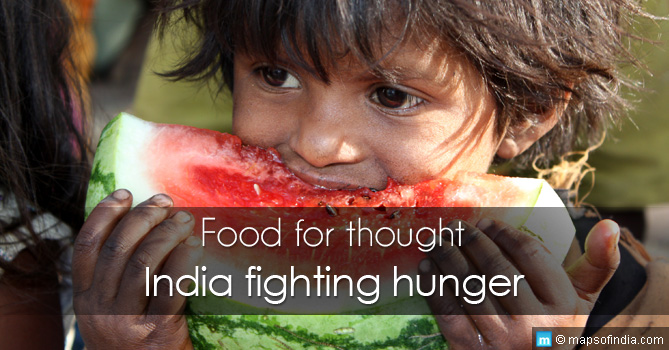The coronavirus pandemic and induced lockdowns have made food security an issue of concern as it has been on severe levels. According to the Economic Survey of 2018-19, India confronts inadequacy of water and irrigation, supply issues, small landholdings and low per capita GDP.
Let us try to understand all about the food security concept in this article.
Food security refers to physical and economic provisions to people at every point of time with sufficient amounts of unadulterated and nutritious food to sustain their healthy living easily.
It also means that people like farmers, who grow and produce food, live a suitable life with their increased wages time-to-time, processing, and transportation availability.
The concern related to food security goes back to 1943, the endurings of the Bengal Famine. At the time of British colonial rule, 2 million to 3 million people died due to starvation. After the country’s independence, the primary idea was to industrialise while avoiding agriculture, followed by two droughts in the mid-1960s and reliance on food assistance from the United States. It revealed India’s crisis on food security terms. In the late 1960s and early 1970s, the country had a Green Revolution, which focused on tackling productivity stagnation and considerably changes the food grain production process.
With agricultural productivity being low, India has 195 million undernourished people across the globe, which is the largest among the countries. Approximately 47 million or 4 in 10 children in India do not meet their complete human ability because of chronic undernutrition or stunting.
The Global Food Security Index (GFSI) evaluated food security based on four parameters: availability, affordability, quality and safety. India is ranked 71st out of 113 countries, while the Global Hunger Index stated that in 2020, India was ranked 94th out of 119 qualifying countries.
Food security is vital for everyone because it enhances the agricultural sector, maintains food prices, leads economic prosperity by offering jobs to reduce poverty. Also, it upsurges global security and stability and boosts healthcare for trade ideas and implementations related to it.
The food system is a chain with its maximum reach, which comprises the production, processing, distribution, marketing, purchasing, storing and utilisation of food.
Elements of Food Security
- Presence of food: Food should be available in adequate quantities with non-stop flow. It emphasises storage and production in a specific jurisdiction and the ability to ferry food from other places through aid or trade.
- Access to food: One should be able to consistently purchase limited quantities of food through ways such as acquiring, borrowing, aid, and swap. The food supply connects all of them. Hence, food security relies on a healthy and sustainable food system.
- Consumption of food: The utilisation of food must have growth after intake of nutritional substances. It requires cooking, safety, hygiene practices, water and sanitation, providing and exchanging things.
Sustainable food system:
- Environmental concern: One should think that food production and acquisition do not affect the land, air, water, future generations, considering the health in our surroundings becomes essential.
- Economic development: It enables the suitable living approach (by decent wages) of the people involved in producing food and completing its system chain. It leads to producers’ capacity to produce food continuously.
- Human Health & Social Equity: In this, it’s crucial to impact community development and its health. The presence of healthy foods remains physically and economically to the community, and that people can appropriately acquire the foods.





